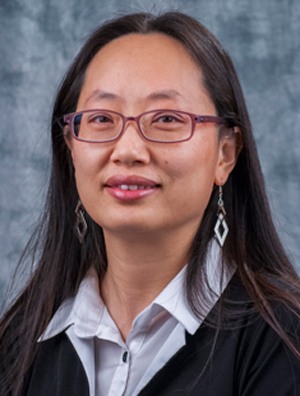Virtual Data Library Protects Sensitive Information, Facilitates Multidisciplinary Research Projects
A researcher-led team at Texas A&M University is planning to build the Texas Virtual Data Library, or Texas ViDaL, a secure and cloud-based computing environment that will allow researchers from many academic disciplines to work with sensitive data from a variety of sources while fully protecting the confidentiality of the information.
The Texas ViDaL team will host its first user meeting on Monday, Oct. 22, 10-11:30 a.m., in Room 402 of Rudder Tower. The project received a $1.4 million grant from Texas A&M’s Research Development Fund in spring 2018. Pilot projects are scheduled to start in spring 2019
Vital research into such topics as public-health threats, transportation infrastructure or natural-disaster preparation frequently relies on data that contain confidential or proprietary information, said the project’s lead investigator, Hye-Chung Kum, associate professor in the Department of Health Policy Management at the School of Public Health, with joint appointments in the departments of computer science and engineering and industrial systems and engineering, both in the College of Engineering.
For many research disciplines, Kum said, handling sensitive data is an ever-expanding responsibility. In addition, she said, the information often comes from many sources and in incompatible formats. Protecting this data is vital, she said, but the required procedures cost additional time and money to complete.
“The Texas ViDaL project will address these issues by building a secure, fully compliant and cloud-based computing infrastructure while growing resources available through the Texas A&M High Performance Research Computing group,” Kum said. “Researchers who use Texas ViDaL will have remote access to the secure high-performance computing resources they need without the additional effort of setting up computing environments or the additional cost of purchasing hardware, software or subscriptions to commercial cloud-based systems.”
Texas ViDaL will enhance multidisciplinary research at Texas A&M by providing a common and secure workspace for researchers and their teams, said Vice President for Research Mark A. Barteau, professor and holder of the Halliburton Chair in Engineering, Department of Chemical Engineering, College of Engineering, and professor in the Department of Chemistry, College of Science. The project will make collaboration between disciplines more efficient by reducing redundancy while improving infrastructure.
“This virtual data library will give Texas A&M researchers a significant advantage,” Barteau said, “especially during those preliminary, unfunded stages that require exploratory analysis to refine questions and methods. Our researchers are gaining an invaluable tool for writing competitive proposals to secure funding for the multidisciplinary projects that can address complex problems worldwide.”
Key participants in the Texas ViDaL project include Texas A&M’s colleges of agriculture and life sciences, education and human development, engineering, liberal arts, nursing and science; its Public Policy Research Institute, School of Public Health, Health Science Center and Mays Business School; and two state agencies from The Texas A&M University System – the Texas A&M Engineering Experiment Station (TEES) and the Texas A&M Transportation Institute.
In addition to Kum, the members of the project’s management team are Honggao Liu, director of High Performance Research Computing, Division of Research; Mark Fossett, professor and director of the Texas Census Research Data Center, Department of Sociology, College of Liberal Arts; and Mark Lawley, TEES Research Professor, department head and holder of the Mike and Sugar Barnes Department Head Chair in the Department of Industrial and Systems Engineering, with a courtesy appointment to the Department of Biomedical Engineering, College of Engineering, and a courtesy appointment to the Department of Epidemiology and Biostatistics at the School of Public Health, and deputy director of the TEES Center for Remote Health Technologies and Systems.
“The progress made and lessons learned through this project will likely lead to further research and improvements in the secure and compliant computing field,” Kum said. “The Texas ViDaL project sets an ambitious but reachable goal that will help Texas A&M researchers in many different fields stay competitive.”
Details about the Texas ViDaL project are available online at https://vidal.tamu.edu/.
About Research at Texas A&M University: As one of the world’s leading research institutions, Texas A&M is at the forefront in making significant contributions to scholarship and discovery, including that of science and technology. Research conducted at Texas A&M represented annual expenditures of more than $905.4 million in fiscal year 2017. Texas A&M ranked in the top 20 of the National Science Foundation’s Higher Education Research and Development survey (2016), based on expenditures of more than $892.7 million in fiscal year 2016. Texas A&M’s research creates new knowledge that provides basic, fundamental and applied contributions resulting, in many cases, in economic benefits to the state, nation and world. To learn more, visit http://research.tamu.edu.
###
Media contact: Hye-Chung Kum, Kum@tamu.edu.





